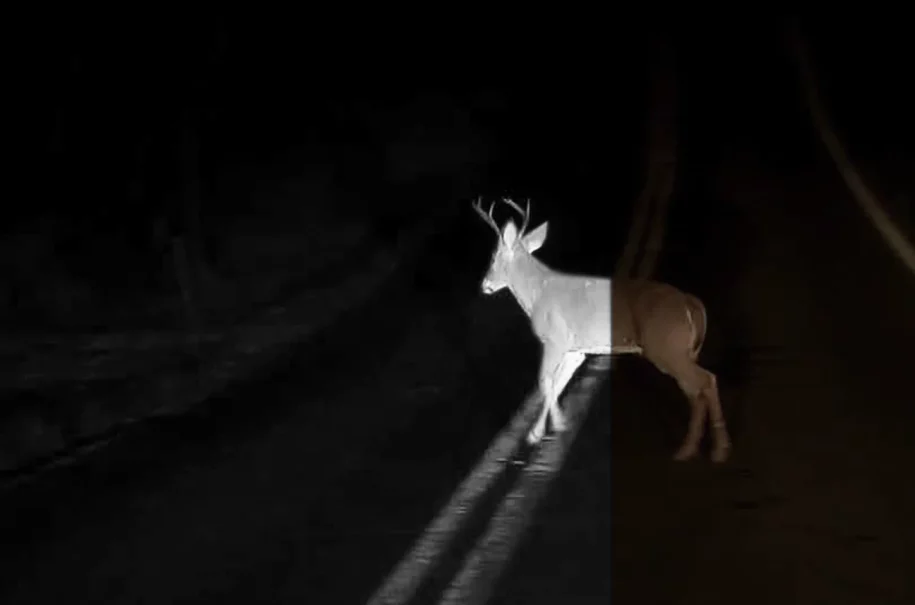Risk Factors for Deer Collisions and How to Avoid Them
Tell us if this sounds familiar to you. You’re coming back home from work late one fall day. It’s dark and happens to be a little foggy. As you’re listening to the radio and staring at the road ahead of you, you catch a glimpse of some eyes on the side of the road, reflecting your headlights. Before you can even react to those eyes, another deer materializes right in front of your vehicle, and it’s too late to react. Wham! Deer collisions are very common in many states and almost become a fact of life when living in rural areas. But there are several factors that can increase your risk of hitting a deer, which we’ll walk through below.
Deer-Vehicle Collision Statistics
First, let’s walk through a few statistics for deer collisions. Some states have a higher risk of hitting an animal than others, largely because of the types of habitats and deer populations in those states. West Virginia, Montana, South Dakota, Michigan, and Wisconsin (all heavily rural states) are the top 5 states in terms of risk for deer collisions. For context, you have a 1 in 35 chance of hitting an animal (most likely a deer) in West Virginia, while you have a 1 in 54 chance of hitting one in Wisconsin. Averaged across the U.S., drivers have a 1 in 115 chance of hitting a deer or other animal, which is fairly substantial. From 2021-2022, there were almost 2 million animal collision insurance claims! Knowing just how common it is, here are the main risk factors and tips to avoid accidents in the future.
Factors That Increase Deer Collisions
Importantly, there are several things that increase your deer collision risk while driving. Knowing them and being aware of the conditions when you drive can dramatically reduce your chances of getting into an accident and having to file an insurance claim.https://www.facebook.com/plugins/video.php?height=420&href=https%3A%2F%2Fwww.facebook.com%2FGet.NightRide.Thermal%2Fvideos%2F794290918616030%2F&show_text=false&width=560&t=0
- Awareness During the Fall – according to insurance claim data from State Farm, drivers have the highest risk of deer collisions in November, October, and December (specifically in that order). This is likely because this timeframe overlaps with the whitetail and mule deer rut. During this breeding period, bucks are searching for receptive does and does and fawns are being pushed about. As winter approaches, deer will also search for the best places to feed so they can put on some weight, which means they will be more active.
- Rural Roads – when driving on a winding, country road, you’re clearly more likely to collide with a deer than you are when driving in a city. So if you live in a remote area, you’re already at a higher risk for hitting a deer than your urban-dwelling neighbors. Unmowed vegetation or woodlots adjacent to the roadside can easily shield animals from your view.
- Driving in the Dark – because of the rut, deer are especially on the move under cover of darkness, which obviously makes them harder to see while driving. And in all the states mentioned above, late fall and winter means you will often be driving in the dark as you go to work or come home. Spending more time on the road in the dark increases your risk for deer collisions dramatically.
- Weather Conditions – of course, various weather conditions can have the same effect as driving in darkness – it makes it harder to notice deer until you are very close to them. Rain, snow, and fog can all easily hide deer standing on the roadside or in a ditch. Additionally, deer may even move more during these conditions, which further increases the chance of encountering them on the road.
How to Avoid Deer Collisions
Now that you know some of the factors that increase your risk of deer collisions, what can you actually do about them?
Obviously, you can’t just not drive during the fall. But you can be more alert. Knowing that deer are more active this time of year, you should pay special attention to the roadsides and leave yourself more time to react. Using thermal cameras for deer can really increase your chances of spotting a deer before it’s too late. Thermal cameras detect the body heat of any human or animal long before you can see them with your eyes – this is especially true under cover of darkness. By mounting your phone to your dash, you can see their heat signature down the road and adjust your speed accordingly to avoid them.

You can’t always avoid driving in the dark either. As mentioned, some states spend most of the winter in the darkness during prime commuting hours, and you need to keep going about your life. But you can utilize your high beams while driving (where safe to do so without blinding other drivers), which will light up the roadside better and help you detect animals faster. It’s also a good idea to slow down in certain areas where you know there may be deer. For example, stream and river crossings tend to funnel deer movement, while densely wooded or brushy areas adjacent to the road may hide them. Large agricultural fields (e.g., corn, soybeans) can attract lots of deer to feed under cover of darkness, so be especially alert and slow down while driving through these areas. Again, thermal cameras can help you see through the darkness without relying on high beams.
One of the best ways to avoid deer collisions due to bad weather conditions is to avoid driving in those conditions in the first place. But that’s not always possible either. This is where a thermal camera can really shine again. It detects body heat through fog, rain, wind, snow, etc. when your eyes aren’t able to actually see them. When you notice a heat signature on the side of the road, you can slow down and watch to make sure they don’t intercept your vehicle.

